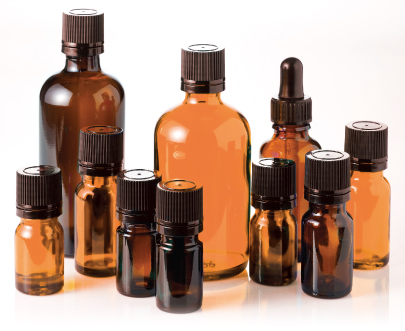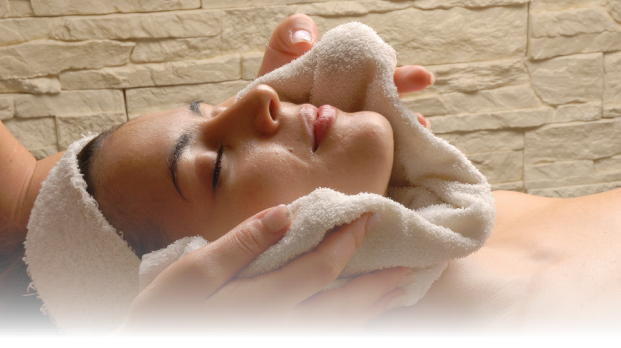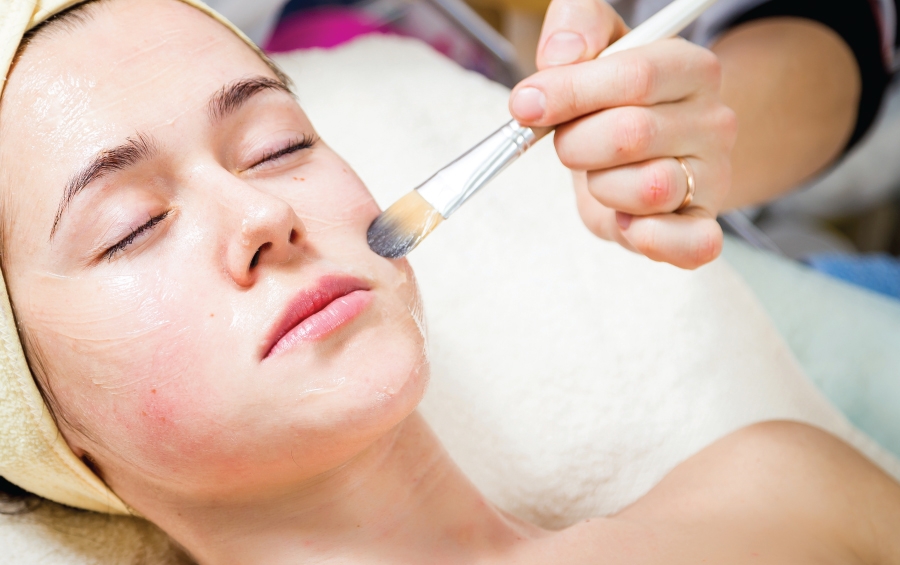Regular cell turnover and exfoliation is important to healthy skin. With chronological aging, as well as exposure to ultraviolet (UV) rays and other environmental offenders, our desquamation slows. This slowing can lead to a buildup of dead surface cells, a dull complexion, and impaired barrier function. Chemical exfoliants help to facilitate the release of impacted cells from the stratum corneum (SC), leaving a healthy, even complexion. The most commonly used exfoliating acids are alpha hydroxy acids (AHAs), beta hydroxy acids (BHAs), trichloroacetic acid (TCA), the Jessner’s solution, and a variety of other acid blends.
Alpha Hydroxy Acids
A group of carboxylic acids, AHAs include lactic, malic, tartaric, citric, mandelic and glycolic acids. Topical AHA research began in the 1970s, but regular cosmetic use did not become common until the early 1990s. Lactic and glycolic acids are by far the most studied AHAs for topical use. Alpha hydroxyl acids are typically used in percentages ranging from 10 to 70 percent. These exfoliating acids are among the more gentle exfoliating agents and are suitable for all Fitzpatrick skin types. They act by breaking down intracellular desmosomal bonds, promoting the exfoliation of varying depths of cutaneous cells. Studies have indicated that when applied topically, AHAs have been shown to promote collagen synthesis in the skin while desquamating the corneocyte cohesions just above the granular layer. Because both glycolic and lactic acid offer similar benefits in regards to exfoliation, it is their unique ancillary properties that differentiate the two.
Glycolic acid has a small molecular structure, which allows for faster epidermolysis and as a result, higher instances of inflammation and overstimulation. Glycolic was the first AHA to be widely investigated for topical use. It has been shown to decrease hyperpigmentation and has strong degreasing properties, making it highly appropriate for oily and acneic skin. It has also demonstrated efficacy in reducing hyperpigmentation and as a prepping agent prior to deeper peels.
Lactic acid’s comparatively larger molecule allows it to penetrate into the skin more slowly, reducing the potential for undue inflammation. Lactate from lactic acid is a humectant and a component of the skin’s natural moisturizing factor, making it inherently hydrating. Lactic acid has been shown to provide antimicrobial benefits and inhibit tyrosinase production, assisting in the reduction of dyschromias. It is beneficial for all skin types.
 Beta Hydroxy Acids
Beta Hydroxy Acids
Another group of topically used carboxylic acids are BHAs which include salicylic acid. Originally derived from willow tree bark, wintergreen oil, and sweet birch, early experimentation with topically applied salicylic acid began in the early 1940s. Its lipophilicity allows it to effectively penetrate through impactions and into sebum-filled follicles. It is a keratolytic agent that also provides anti-inflammatory benefits, making it suitable for sensitive skin conditions such as rosacea. Salicylic acid is typically used at 10 to 50 percent and is appropriate for all Fitzpatrick skin types, due to its slower rate of penetration.
Trichloroacetic Acid
Among the most widely used acids in skin care, TCA was originally studied topically in 1945 as a safer, more predictable alternative to deeper phenol treatments. A chemical cauterant, TCA causes protein denaturation when applied topically. It is synthetically produced by combining acetic acid and chlorine and has historically shown no signs of systemic toxicity when used as a topical exfoliant.
It can be used in various percentages (six to 50 percent) to provide a variety of peel depths, ranging from superficial, SC exfoliation to medium-depth exfoliation, reaching the papillary dermis. Typically, TCA is used in percentages over 20 percent in Fitzpatrick skin types I to III, as these higher percentages tend to induce a medium-depth peel, which could lead to post-inflammatory hyperpigmentation (PIH) in higher Fitzpatrick skin types. Furthermore, TCA is ideal for stimulating collagen production and improving textural inconsistencies, including wrinkling, keratoses and scarring. The exfoliation provided also effectively lifts pigmented keratinocytes, lightening hyperpigmentation. It is indicated for all Fitzpatrick skin types; however, percentages above 20 percent should be reserved for Fitzpatrick types I to III.
Modified Jessner’s Solution
The first blended acid chemical peel marketed to physicians was the modified Jessner’s solution. Originally, it consisted of 14 percent each of lactic acid, salicylic acid, and resorcinol blended in an alcohol base and was considered a superficial chemical peeling agent. This combination of ingredients was first documented in 1941.1 In the early 1950s, Doctor Max Jessner popularized the 14 percent version that is widely available today. The term “modified and enhanced Jessner’s solution” indicates that alterations have been made to this original formulation. In Doctor Mark Rubin’s Chemical Peels, he writes about the development of the first modified and enhanced Jessner’s solution. The original formula was modified to add melanogenesis inhibitors, as well as to create an option where resorcinol was optional. These innovations increased the effectiveness of the time-tested Jessner’s solution and decreased side effects commonly seen with straight AHAs, including inflammation, irritation and PIH. As first demonstrated by the Jessner’s solution, using blends of peeling agents that have differing mechanisms of action creates optimum patient outcomes.
The combination of 14 percent lactic acid, 14 percent salicylic acid, and 14 percent resorcinol has been shown to be effective in the treatment of acne, hyperpigmentation and visible aging. The modified Jessner’s solution provides superficial exfoliation for Fitzpatrick skin types I to VI.
Blended Acid Chemical Peels
Acid chemical peels that have been blended provide the exfoliation and other ancillary benefits of straight acid peels, but usually with much less risk of inflammation, limiting complications. There are a variety of combinations that are beneficial for treating many skin conditions and all Fitzpatrick skin types. Blended peels typically offer a combination of acids in conjunction with melanogenesis inhibitors such as hydroquinone and kojic acid; hydrating agents, like soy isoflavones; and anti-inflammatory and antioxidant ingredients such as meadowfoam oil and grape extracts. For accelerated results, these additional ingredients target specific skin concerns, including acne, rosacea, hyperpigmentation and visible aging.
Although blended peels have been used for well over 20 years, there has been a recent increase in interest. Patients are becoming more interested in less aggressive procedures that provide progressive results. Examples of beneficial acid combinations include lactic acid and TCA; retinol and lactic acid; lactic acid, salicylic acid, and glycolic acid, to name a few. By combining multiple acids, each can be used at a lower percentage, thereby maximizing outcomes and minimizing the risk of potential side effects. Most blended chemical peels are proprietary blends dispensed by medical skin care companies.
Is Neutralization Necessary?
Jessner’s TCA and retinol peels do not require neutralization. Constituents of the skin and its water content lead to self-neutralization of the acids within the skin. High percentage pure AHA peels, such as glycolic and/or lactic acid, usually require neutralization with either water (H20) or a weak base like sodium bicarbonate. If these high percentage free acids are not neutralized, they can potentially collect in the upper portions of the skin and cause surface irritation or burns. Unfortunately, the required neutralization process can free water and therefore reactivate the acid, increasing the heat and sensation in the skin. The addition of H2O into the skin where an acid that contains a carboxylic (COOH) group is already present causes the creation of H3O+ and initially lowers the pH further, thereby creating increased heat and discomfort. For these reasons, the use of self-neutralizing peels is advantageous and more comfortable for the patient.
Even when using blends and single acids that do not technically require neutralization, there are instances where intervention with H2O may be preferential. This would be in the cases of allergic reaction and other severe side effects. Although you cannot truly remove a peel once it is applied, this dilution can help to shorten the duration of and minimize the endpoint of any reaction or complication.
As a multitude of minimally invasive cosmetic procedures become available, superficial chemical peels remain a trusted, low cost, and profitable option for skin improvement. Many single acids and blends are appropriate for a variety of patient demographics and provide excellent visible results.
References
1. Eller, Joseph, M.D., and Shirley Wolff. “Skin Peeling and Scarification in the Treatment of Pitted Scars, Pigmentation and Certain Facial Blemishes.” The Journal of the American Medical Association (1941): n. pag. Print.
 Ivana S. Veljkovic, Ph.D. serves as research and development manager for PCA SKIN®, additionally responsible for international regulatory compliance and quality control. Veljkovic participates in educational activities, speaks at aesthetic meetings and writes publications for industry journals. Prior to joining the skin care industry, she worked in pharmaceutical research of novel bioactive molecules. At PCA SKIN, she has created efficient and cosmetically elegant products, utilizing best in class ingredients proven to be safe and effective.
Ivana S. Veljkovic, Ph.D. serves as research and development manager for PCA SKIN®, additionally responsible for international regulatory compliance and quality control. Veljkovic participates in educational activities, speaks at aesthetic meetings and writes publications for industry journals. Prior to joining the skin care industry, she worked in pharmaceutical research of novel bioactive molecules. At PCA SKIN, she has created efficient and cosmetically elegant products, utilizing best in class ingredients proven to be safe and effective.
